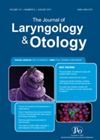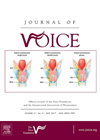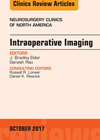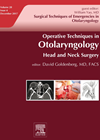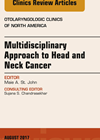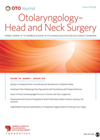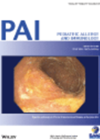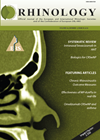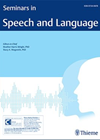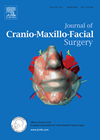
Journal Reviews archive for 2018
Predicting life-threatening complications in deep neck space infections
Deep neck space infections, arising usually from tonsils and lymph nodes in children and dental source and salivary glands in adults can be life threatening. It is therefore important to recognise the variables which indicate immediate intervention to prevent fatalities....
Voice change after total thyroidectomy with intact laryngeal nerves – a common but temporary problem
It has been reported that up to 87% of patients have a degree of voice dysfunction after thyroidectomy, even when the laryngeal nerves are preserved. Postoperative inflammation, laryngeal oedema due to vascular congestion, direct damage to the cricothyroid muscles and...
Close monitoring of patients for delayed hyponatremia post-transsphenoidal surgery
he incidence of delayed hyponatremia is 16-28% and usually accounts for unplanned readmission of the patient within 30 days after transsphenoidal surgery. One of the surrogate measures of quality of care adopted by the government and regulatory agencies is 30-day...
Intraoperative MRI use during pituitary tumour resection
This article provides an overview of intraoperative MRI (iMRI) use in transphenoidal surgery (TSS) for pituitary tumours. Traditionally imaging of the surgical field during surgery involves intraoperative fluoroscopic imaging or neuronavigation which help to avoid injury to critical structures but...
“It’s paediatric resus calling…”
This article is one of many within this issue that addresses a variety of ENT emergencies. The article outlined the stepwise process of assessing and managing a child with a suspected foreign body (FB) inhalation. Nuts, seeds and vegetable matter...
Advances in surgical innovation for head and neck cancer
This article reviews current advances in surgical treatment of head and neck cancers such as sentinel node biopsy, stereolithic modelling, transoral robotic surgery and intra-operative imaging of tumour margins. Sentinel node biopsy has been found to be especially useful for...
An algorithm to distinguish between distant metastases and metachronous lung primary in patients with HPV-related oropharyngeal cancer
Distinguishing between distant metastases of HPV-related oropharyngeal squamous cell carcinoma (OPSCC) and metachronous primary lung squamous cell carcinoma (SCC) is important as it has implications for treatment, prognosis counselling, and registry data. Although p16 immunohistochemistry (p16 IHC) is widely accepted...
Allergen immunotherapy and allergic rhinitis – EAACI guideline 2017
Allergic rhinitis (AR) is a common chronic childhood disease with considerable social burden and impact on quality of life, frequently necessitating treatment with various combinations of antihistamines and corticosteroids. The allergen immunotherapy (AIT), sometimes known as desensitisation therapy, can modify...
Long term morbidity of extended medial maxillectomy for inverted papilloma
This Italian review paper looks at five-year morbidity after extended endoscopic medial maxillectomy in 59 patients in a university teaching hospital setting. All patients underwent an extended approach medial maxillectomy for inverting papilloma, this included removal of the entire medial...
Technology at the right time in the right place for people with communication difficulties
The ‘just-in-time’ (JIT) construct was developed as a business strategy for a major Japanese car company in the 1970s. It has now been applied to many other business models throughout the world. The JIT concept is where something is provided,...
Dental implant rehabilitation in fibula free flaps
The fibula free flap was first described in 1975 and since then has gone on to become the gold standard technique for reconstruction of longer spans in the mandible or maxilla. It is a reliable flap that affords good quality...
What is the evidence for contralateral tonsillectomy in TORS for known unilateral tonsil malignancy?
The concept of field changes by carcinogens within the upper aerodigestive tract is well established with reported rates of synchronous tumours of 4% and second primaries of 36%. The tonsil in particular has the highest rate of synchronous tumours, postulated...

